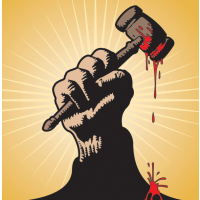California Back on the Slow Path to Resuming Executions

California is determined to execute a prisoner, somehow, some way.
It’s been 10 years since the state put someone to death, but it’s not for lack of enthusiasm or effort. On Tuesday, the Brown administration announced settlement of a lawsuit brought by crime-victim families that would advance the cause of executions by leading to a new method of lethal injection before year’s end.
The fight over finding a lethal drug protocol that would pass muster with the courts as not being too cruel and unusual has been long, arduous and unsuccessful. State executions were brought to a halt in 2006 when the three-drug concoction favored by the California Department of Corrections and Rehabilitation (CDCR) was found to be a tad too painful.
After that, it was tough to agree on a protocol and then find the drugs. Anti-death penalty groups have pressured manufacturers not to make them, although foreign imports and compounding pharmacy substitutes are trending. California thought it finally had a solution and could get the intravenous fluids flowing again, but were shot down by the California First District Court of Appeal in 2013.
The three-judge panel upheld a lower-court ruling that the state had committed procedural mistakes in drawing up new rules for executing prisoners, as required by a federal judge two years before. The court ruled that the CDCR failed to properly include public participation in the process of changing the state’s lethal injection procedures (pdf).
Underlying the court’s ruling was a decision by the CDCR to reject the federal judge’s suggestion that it should substitute a one-drug alternative for the state’s preferred three-drug lethal cocktail. Critics of the three-drug method maintain that it is problematic because one of the drugs, pancuronium bromide, can mask severe pain by paralyzing the prisoner.
According to the court, the state never made clear to the public why it was sticking with its choice and that triggered the court ruling.
The Brown administration has maintained for three years that the CDCR has been pursuing a new, lethal-drug proposal, but critics suspected foot-dragging and a lawsuit was filed.
Now California has agreed to pursue a single-drug solution to its vexing problem. But first, the state must wait for the U.S. Supreme Court to rule in an Oklahoma case where the three-drug method is on trial. A decision is expected later this month. Then the state has 120 days to propose its solution.
Whichever way the high court rules, more lawsuits are expected over any California proposal. And then there’s the ruling (pdf) by U.S. District Judge Cormac J. Carney in July 2014 that California’s entire death penalty process was unconstitutional because of all the delays. The judge wrote:
“For all practical purposes then, a sentence of death in California is a sentence of life imprisonment with the remote possibility of death—a sentence no rational legislature or jury could ever impose.”
The state is appealing.
In the meantime, Death Row at San Quentin has just about run out of room. If a couple dozen of the 730 or so condemned males weren’t in medical facilities, prisoners would have to line up to get up in.
–Ken Broder
To Learn More:
California Officials Reach Settlement on Path to Resuming Executions (by Alex Dobuzinskis, Reuters)
California Death Penalty: New Execution Method Will Be Proposed (by Howard Mintz, San Jose Mercury News)
State to Create New Lethal Injection Method Under Legal Settlement (by Maura Dolan, Los Angeles Times)
Death Row Runs Out of Room (by Ken Broder, AllGov California)
Bradley Winchell and Kermit Alexander v. Jeffrey A. Beard (Sacramento County Superior Court of California)
- Top Stories
- Controversies
- Where is the Money Going?
- California and the Nation
- Appointments and Resignations
- Unusual News
- Latest News
- California Forbids U.S. Immigration Agents from Pretending to be Police
- California Lawmakers Urged to Strip “Self-Dealing” Tax Board of Its Duties
- Big Oil’s Grip on California
- Santa Cruz Police See Homeland Security Betrayal in Use of Gang Roundup as Cover for Immigration Raid
- Oil Companies Face Deadline to Stop Polluting California Groundwater





